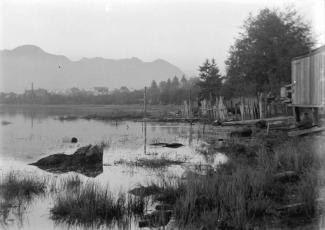Join us in the PLOT space for the second event in KEXMIN Field Station's still underwater project, looking at the open-source landscapes of environmental and biological artist Oliver Kellhammer in the adjacent neighbourhoods near Access.
SCHEDULE
1 - 1:30PM - Meet at Access Gallery: Skype discussion with Oliver Kellhammer
2 - 3PM - Cottonwood Garden with Rose-Marie Larson
3 - 4PM - Means of Production Garden with Sharon Kallis
4 - 5PM - Healing the Cut with Mike Simpson
Please note that there will be travel between each location. For more details on accessibility, please contact kexminfieldstation@gmail.com.
BIOS
Environmental and biological artist OLIVER KELLHAMMER has three decades of achievements working with public space and outdoor sites based on his philosophy of democratic interventions through 'open source landscapes'. His three, site-based works on trashed sites around the historic shores of False Creek Flats (sometimes referred to as 'hole-in-bottom') have been prescient especially within the movement of art as forms of ecological remediation and decolonization.
LEN KYDD is a retired construction worker and long time Cottonwood gardener. He started the Native garden in Cottonwood. "Truth is, he knows everything there is to know about Cottonwood and he knows Oliver.”
Using the lengthy title of being a community engaged environmental artist, what SHARON KALLIS really does is commit to being a life-longer learner. Learning while teaching—and teaching while learning—Sharon partners with ecologists, gardeners, weavers and others with an interest in linking traditional hand technologies to what we can grow, gather and glean in our urban green spaces. Sharon has been one of the primary stewards of Means of Production since 2007 and the roots of her creative practice are deeply entwined with this public park and garden. Sharon is the founding executive director of EartHand Gleaners Society.
MIKE SIMPSON is an urban geographer, and postdoctoral researcher in the Department of Geography at UBC, as well as a former student of Oliver's. His research considers how solidarity is practiced between settler environmentalists and Indigenous land and water defenders on the frontlines of these struggles, and broadly asks how transformative movements seeking to bring about social and environment change can be built across difference.
Image: View of False Creek in 1904. From City of Vancouver Archives.
